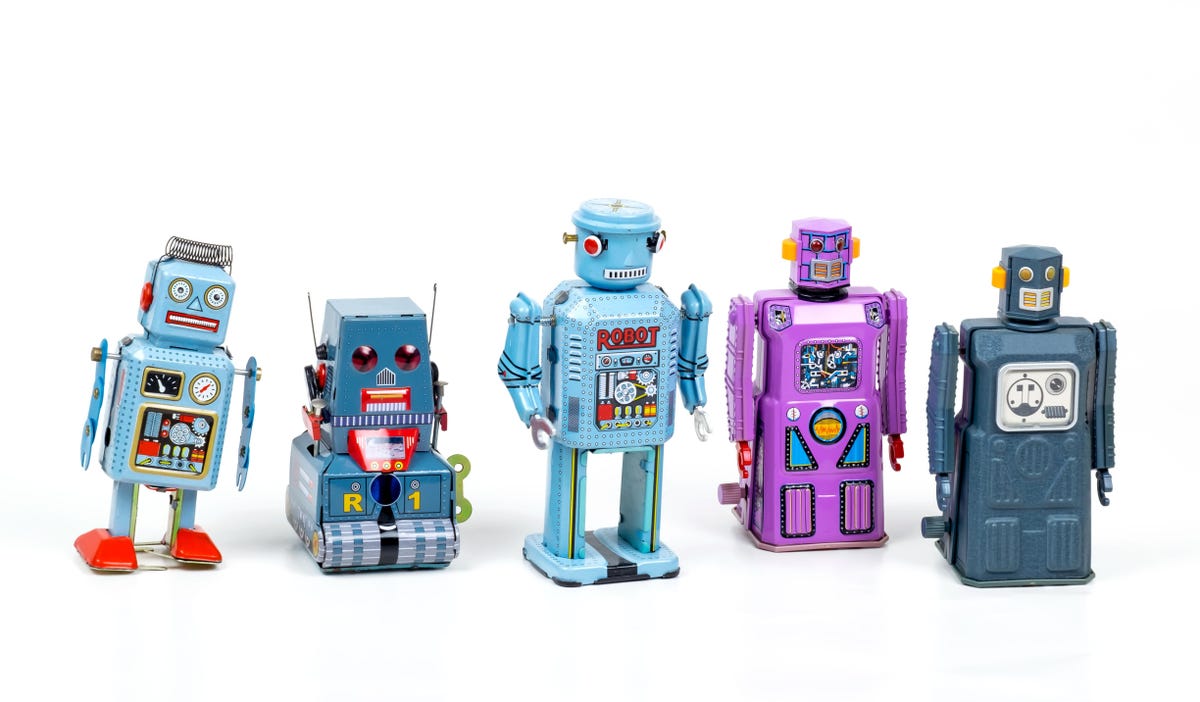
AI and robots are here for good
Eric Krull via Unsplash
Artificial intelligence (AI) is just a supporting player in the wider world of robotics. Unlike sensationalist sci-fi flicks, robots have had an important role since the earliest days of industrialization. From manufacturing line efficiencies to support in surgery, robots are integral to many core social constructs. The never-actualized dynamic of robots with intuition could finally be on the horizon.
ADVERTISEMENT
AI, algorithms and technological applications are accelerating into new realms. With the proper implementation of ethics, diversity, and inclusive design – humans stand to benefit significantly.
Tasks that can be automated are easily replaced by forays into new fields, such as alternative energy or tech. One expert puts it this way: “Security robots, including drones, will increase in use and scale within the next decade. As a result, the cost will decrease, and new capabilities will come to light. This technology offers security professionals the unique ability to enhance procedures without replacing human workers.”
Each day, we are watching companies use AI and robotics to achieve good:
- Scientific advancements and breakthroughs
- Solving complex problems
- Generating millions of new skilled jobs in better working conditions
Over the next few years, the rate of innovation and investment in AI and robotics technologies is set to surge.
The Role of AI and Robotics in Improving Productivity
Far from a space-bound dream, AI and robotics are working in tandem to provide real solutions to human challenges. And, while they may require significant upfront investment, AI and robotics technologies pay for themselves many times over in terms of the productivity gains that they drive.
MORE FOR YOU
One example of a company driving this gain is SMP Robotics. Back in 2010, when the company was founded, AI existed in very limited applications, without wide implementations throughout various industries.
The team behind SMP Robotics realized that they needed a working solution for the robots to navigate autonomously, perform efficiently and become an ultimate driving force of innovations. Soon after, NVIDIA introduced their cutting-edge chipsets that provided a technological boost. Now, SMP Robotics is a leading provider of outdoor security robots and advanced monitoring solutions.
SMP Robotics CEO Leo Ryzhenko
SMP Robotics
ADVERTISEMENT
CEO Leo Ryzhenko explains, “Implementation of automation processes or robotics into a workspace substantially reduces cost of service and product, improves quality of service and its affordability to a business. This creates a trickle-down domino effect where everyone gains from deployment of such advanced technology as robotics.”
Since its inception, SMP Robotics has been instrumental in using robots to improve the operational business processes of their clients. They’ve seen the following benefits time and again:
- Substantial increase in labor productivity
- Optimization of operational overhead
- Improvement in a level of service
- Utilization of advanced technological solutions
- Boost in productivity
When companies drive increased productivity, they’re able to make better products more efficiently, and pass along this value to both consumers, employees, and shareholders. But it’s not only productivity wins that AI and robotics can drive, they’re also dramatically improving safety in our workplaces.
ADVERTISEMENT
Workers First: Towards a Safer Future
The use of robotics in dangerous applications that will ensure humans are safer – particularly as robotics become more advanced and leverage AI technology. Unlike a human, a robot doesn’t turn up and perform slightly less than their best – it operates at 100% all the time, it is never impaired and does not take unnecessary risks
Ople.ai is one company at the forefront of this risk-reducing use of AI and robotics. Their machine learning system takes in data and provides business leaders with predictive analytics.
In other words, the AI technology enables robotics to determine/assess risk profiles and adjust actions accordingly. The outcome? Workers are removed from harm’s way, and can be redirected and retrained to work on higher value human tasks.
ADVERTISEMENT
One key component of any AI-implementation is access. Historically, AI was relegated to the realm of people with in-depth knowledge and expertise. Ople.ai stands out as a company that is committed to the democratization of AI. If the cost and knowledge barriers of AI are removed, the possibilities are limitless.
This platform went through the following steps to achieve a more useful application for AI:
- Use software to determine the number of AI-enabled employees.
- Build a model that can use data in a meaningful way (in Ople.ai’s case, to make predictions).
- Make the model accessible and explainable, so business leaders can make sense of the predictions and find all of the relevant and valuable information.
Ople.ai founder and CEO, Pedro Alves
Ople.ai
ADVERTISEMENT
Ople.ai founder and CEO, Pedro Alves, provides this illustration: “Manufacturing is deeply affected by efficiency. This includes quality control, logistics, reduction of errors, proper allocation of resources.
“In general, if you can manufacture something at a smaller cost, with fewer errors, less down time and less waste (both resources used as well as extra inventory that might go bad) then you can create a tremendous shift in the profitability of manufacturers. All these can be achieved with the combination of predictive analytics and robotics.”
Robots: Here for Good
The truth is, AI has transformed what robots are capable of doing. From streamlining operations to protecting workers, their value is immense. Innovators in this space recognize the value of robots to improve quality of life and create better, safer opportunities for workers.
ADVERTISEMENT
As Ryzhenko explains, “The future of humanity will be greatly assisted by robots and AI. The impact of such innovations will bring improvements in everyday lives and help humans to achieve their most daring dreams.”
